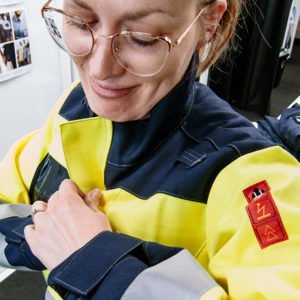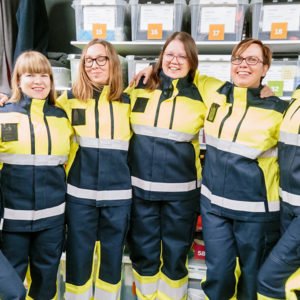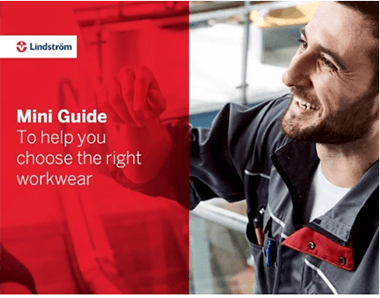Creating safe workwear for women
Designing new workwear takes time and requires a lot of expertise. That is why Anne Vääri, with 20 years of experience in product development, is the key person in Lindström’s new line of protective workwear for women.
 As a Product Manager, Anne’s job is to develop and improve the global workwear offering for Lindström Protective Clothing. She is passionate about her job and loves even the hardest challenges and pays attention to the smallest details. Both qualities came in handy when Anne Vääri, in collaboration with a team of experts, was faced with a tricky task of designing the first-ever Lindström protective workwear clothing line for women.
As a Product Manager, Anne’s job is to develop and improve the global workwear offering for Lindström Protective Clothing. She is passionate about her job and loves even the hardest challenges and pays attention to the smallest details. Both qualities came in handy when Anne Vääri, in collaboration with a team of experts, was faced with a tricky task of designing the first-ever Lindström protective workwear clothing line for women.
“To understand the different needs and tasks of the user wearing the garment is the most critical part of any garment design process. To develop functional clothing, designed to protect the person and keep her/him safe is very demanding because you also need to know the requirements of the legislation and the standards.
Protective clothing must protect the user, and it must be both comfortable and ergonomic. You need to understand the different movements and positions, what tools are used, etc. in order to place the seams and the critical details, like pockets, in the best possible way. Women have different proportions than men, we are usually smaller, and we do have a bit more curves than our male counterpart – so, there are some challenges, for example, then trying to include all the necessary pockets to a smaller space of available material,” comments Anne Vääri.
In the past, women had been accustomed to using men’s protective workwear, which usually meant that the clothing would not fit properly.
“Having hips orbit of a bust means that you have to size up on the clothing, which in turn means that the pants or jacket will be too big on other parts. Too big garment size can cause safety issues, e.g. too long trouser length could make the movement more difficult, not to mention the sparks and spatter gathered to pleats in flame retardant clothing. So, when a customer asked us about protective clothing designed for female workers, we decided to give it a go, to make their working days more comfortable and protected.”
Passion towards challenges
Development of new workwear takes time and good, open communication with the project group is critical to guarantee the best result. Several sample rounds, fitting sessions and washing tests are needed. The result is a team effort of different professionals from product manager to a designer, garment technicians, pattern designer, and manufacturing specialists. These professionals create the design, the specifications, the product patterns, the sewing of prototypes, and the preparation for the mass production.
In addition to the above, there are requirements and standards especially protective clothing needs to follow.
“To make sure the garment is truly safe, you need to exceed especially the minimum requirements of the protective clothing standards. Bets solution is the one that has the optimized fit, ergonomic details, a durable and comfortable material – a garment that enables the user to focus on the work without compromising the safety.“
The hunt for the perfect fit
 Creating a fitting garment in one size isn’t enough as people come in different shapes and sizes.
Creating a fitting garment in one size isn’t enough as people come in different shapes and sizes.
“We usually make the garment fitting with our own people, and with as many different body types and sizes as possible, to make sure clothing feels and acts as intended. To make the fitting sample only in one size is simply not enough. For women, our focus was to find the best fit for all different sizes, and it did take 2 years to go through all the sample rounds and fitting sessions – from the idea to the launching of the line for users,” says Anne.
Even though the protective workwear line for women is now released and available for the customers, Anne’s work is never over. Every time when she sees a person wearing Lindström workwear, she observes how the garment fits and looks, and how the garment reacts to the movements of the person.
“Whenever I see a person wearing Lindström’s workwear, I secretly look at the fit, the look, the material behavior, and how the garment reacts to the movements of the person. You are never ready with product development, you must improve all the time – it is the driving force of your work. When people can forget what they are wearing and can do their work comfortably, then I know my work has been a success!”, adds Anne.
